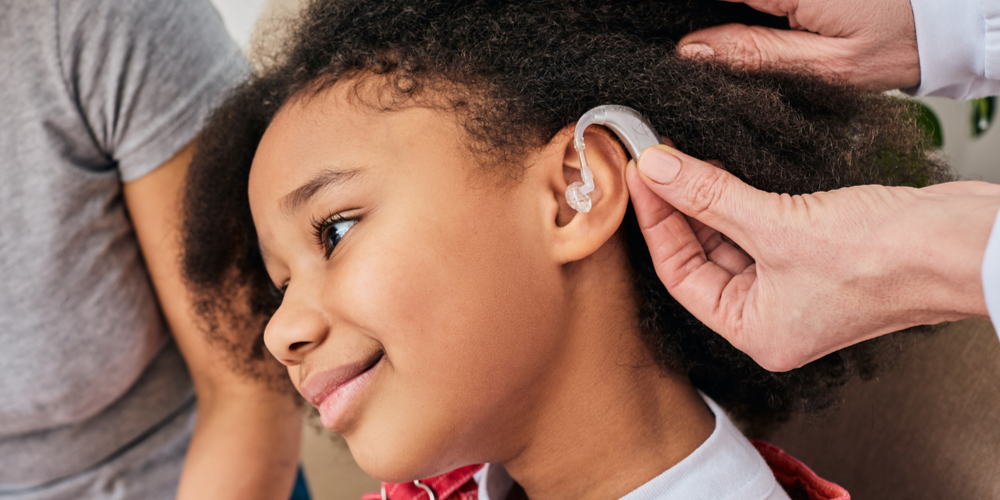
In the UK there are around 840 babies born each year with some form of hearing loss. By the age of three, one in 1,000 children is known to have the condition. If left undetected, and untreated, hearing loss can have an unpleasant affect on your child’s life.
Signs of Hearing Loss
Signs at birth:
- Low birth weight, particularly if less than 2 pounds.
- A baby requiring the support of a breathing machine for more than 10 days after birth.
- Mother having rubella at time of birth.
Signs in young children:
- Delay of speech.
- Family history of hearing loss.
- Repeated ear problems, such as glue ear.
- Syndromes linked with hearing loss, such as Down syndrome.
- Diseases linked with hearing loss, including meningitis and measles.
- Side effects of ototoxic drugs used for serious diseases, such as cancer.
- Poor school performance.
- Learning disorders such as autism can sometimes be linked to hearing loss.
Problems Caused by Hearing Loss
If hearing loss is left unnoticed, the affect on a child’s life can be harmful. It can cause difficulty partaking in everyday speech, and worsen school performance, affecting their prospects in later life.
The impact is dependent on the level of hearing loss, whether it is mild, moderate, severe, or profound.
If the symptoms are identified early your child’s life can be made easier. If left unidentified, however, then it can cause enduring harm to language and learning skills.
Hearing Tests for Children
After birth there are two tests used to check hearing.
Otoacoustic Emissions (OAE) Test: This is a straightforward procedure that can be done in a few minutes, offering instant results. It involves an investigative tool being placed into the ear canal, of which a speaker and microphone are attached. Then, through the speakers, quiet clicking noises are played, and the microphone records the response of the ear to the sounds. This informs the tester whether the cochlea within the inner ear is working properly.
Auditory Brainstem Response (ABR) Test: This is a test typically conducted in an audiology clinic, and gives more comprehensive results than the OAE test. It involves tiny electrical sensors being placed on the child’s forehead, and on each ear lobe. Earphones are then placed over the ears, through which quiet clicking noises are played. The sensors measure the response of different areas of the brain to the sounds.
As a child ages there are a range of other tests used for hearing.
Infant Distraction Test (IDT): This is a test for infants of about 7 months, and tests whether the child can tell precisely where a sound came from. The baby is seated on their parent’s lap, with one tester standing in front to keep the infants attention, and another outside the baby’s line of vision. The hidden tester then makes sounds, and watches to see if the baby reacts accordingly by turning their head to the location of the sound. This test is used little these days as it is not completely accurate.
Pure Tone Audiometry Test: This is a test for children of about 4 years of age, and is used to determine the threshold of a child’s hearing. It involves headphones being placed over the child’s head, and the child then having to raise their hand or press a button when they hear a sound played through headphones.
Play Audiometry: The child listens to sounds, and is then asked to carry out straightforward tasks to acknowledge they have heard them.
Speech Perception Test: This is a test without the advantage of visual aids for hearing, and involves words either being played through headphones, or being said aloud by the tester. The child then has to show when they heard a sound.
Tympanoetry: This is a test typically used to check if a child has glue ear. It involves a small tube being placed in the child’s ear, through which air is gently blown. This will test if the eardrum is adequately flexible to allow sounds to pass through to the inner ear.
Visual Reinforcement Audiometry (VRA): This test is similar to the infant distraction test, and is appropriate for children between seven months and around 2 years of age. It involves sounds of varying levels being played through speakers, and the child then being asked to turn to the source of the sound.
